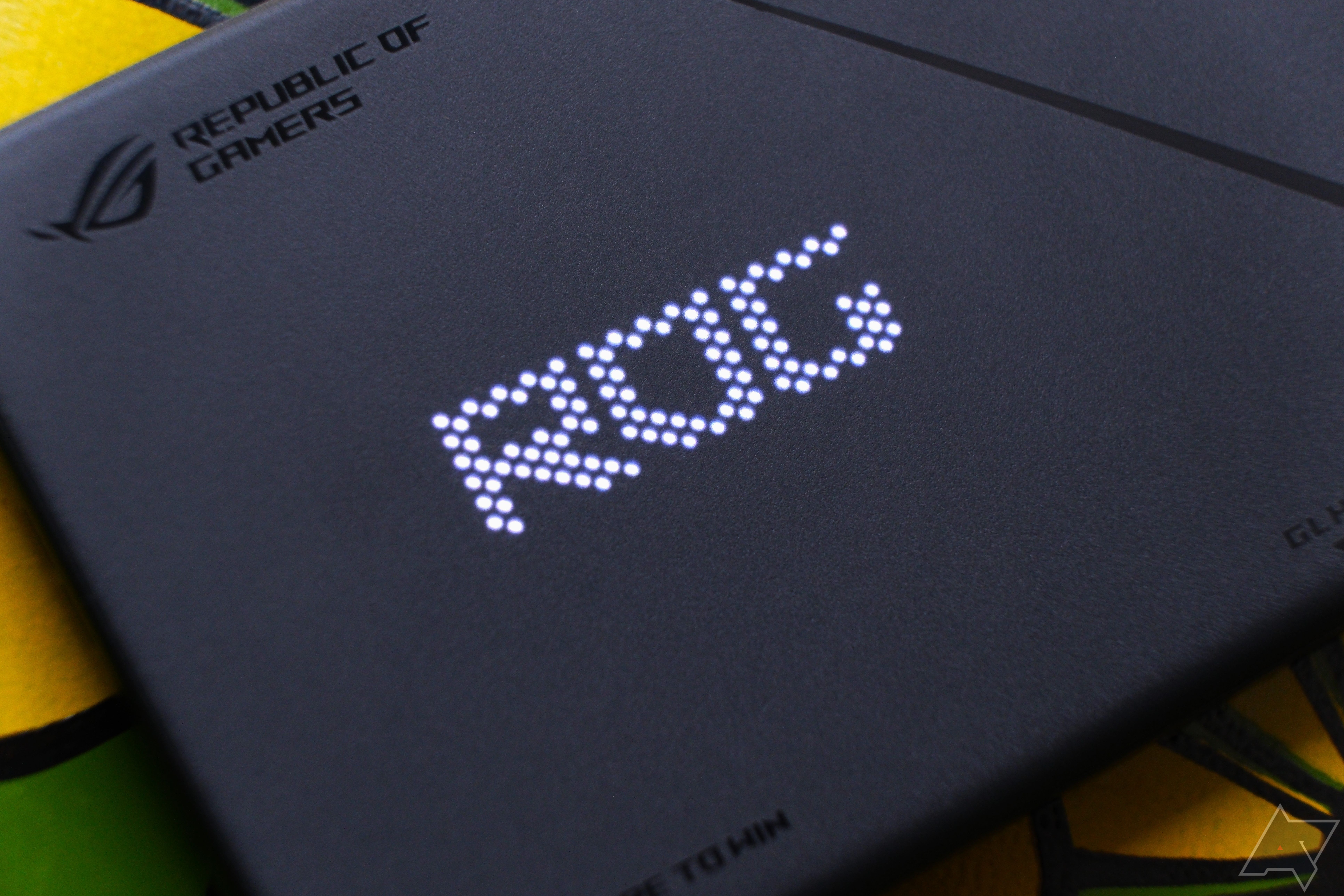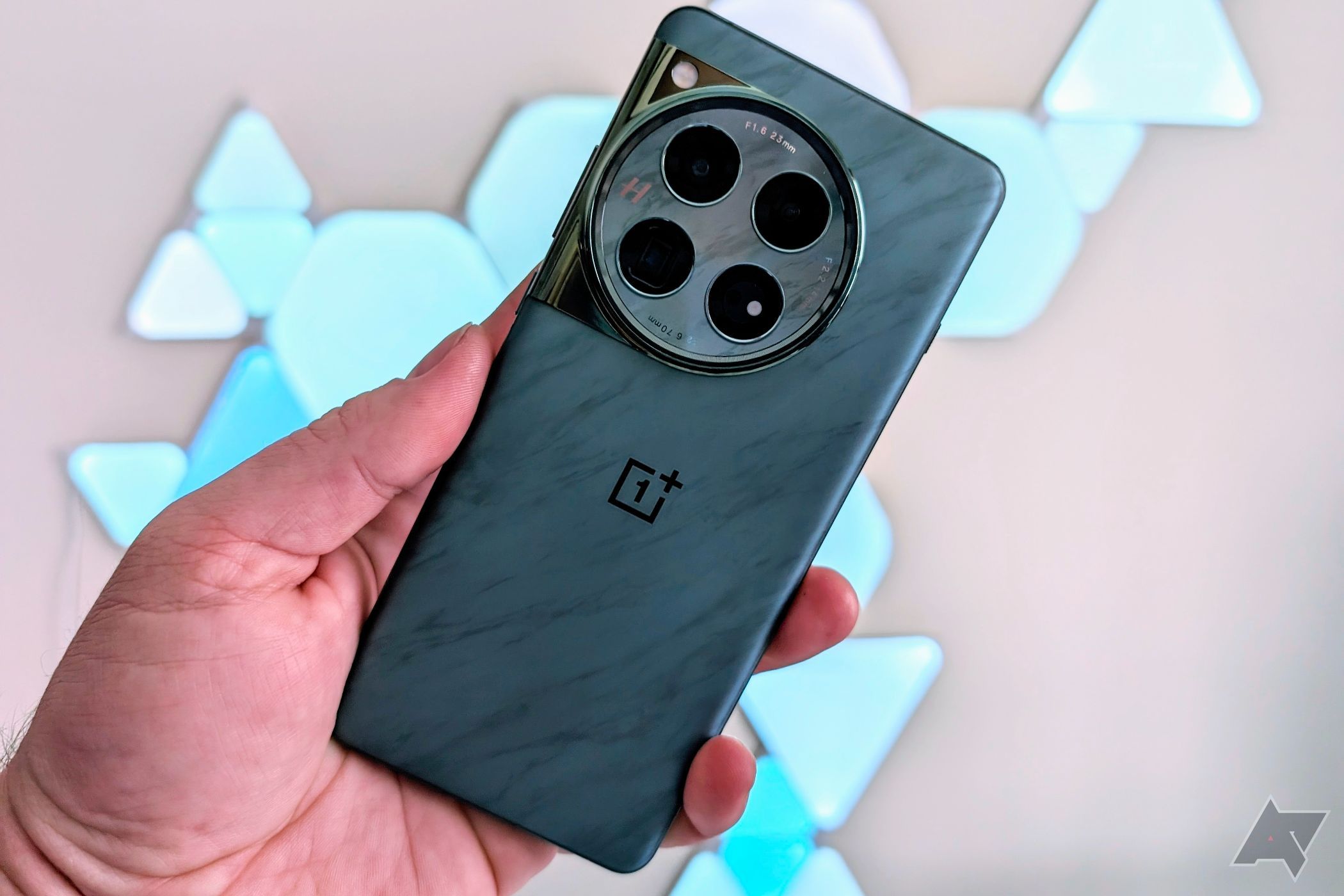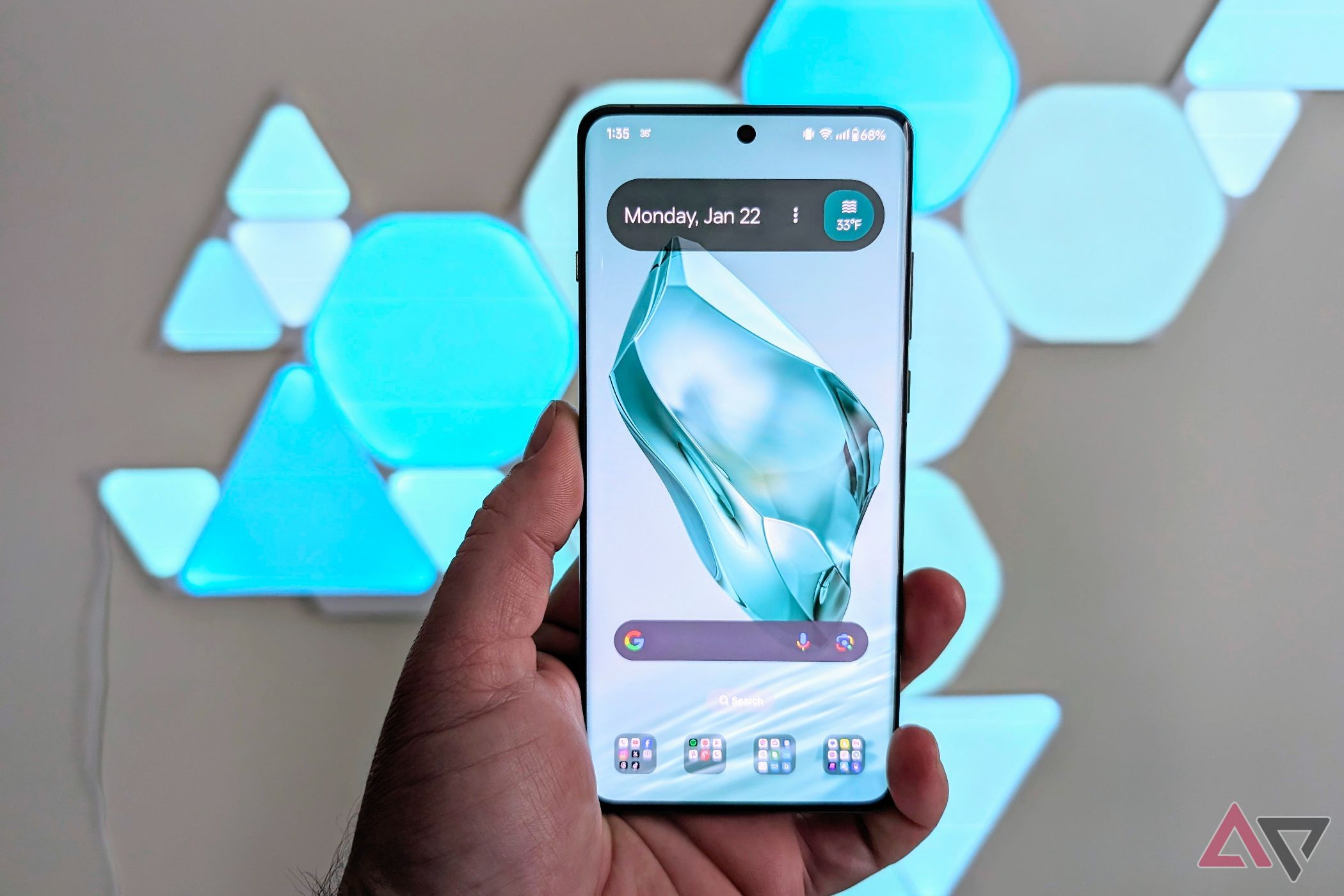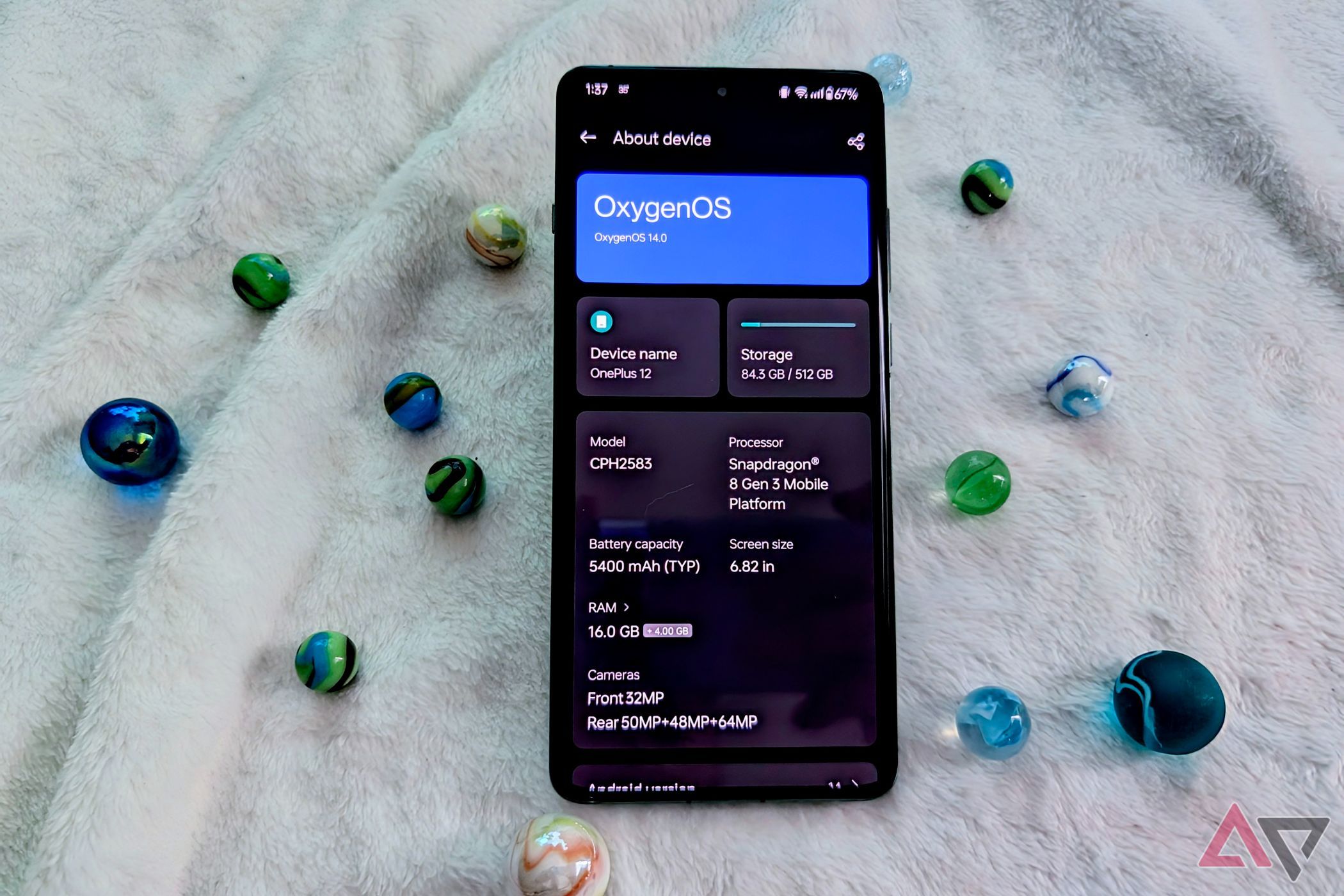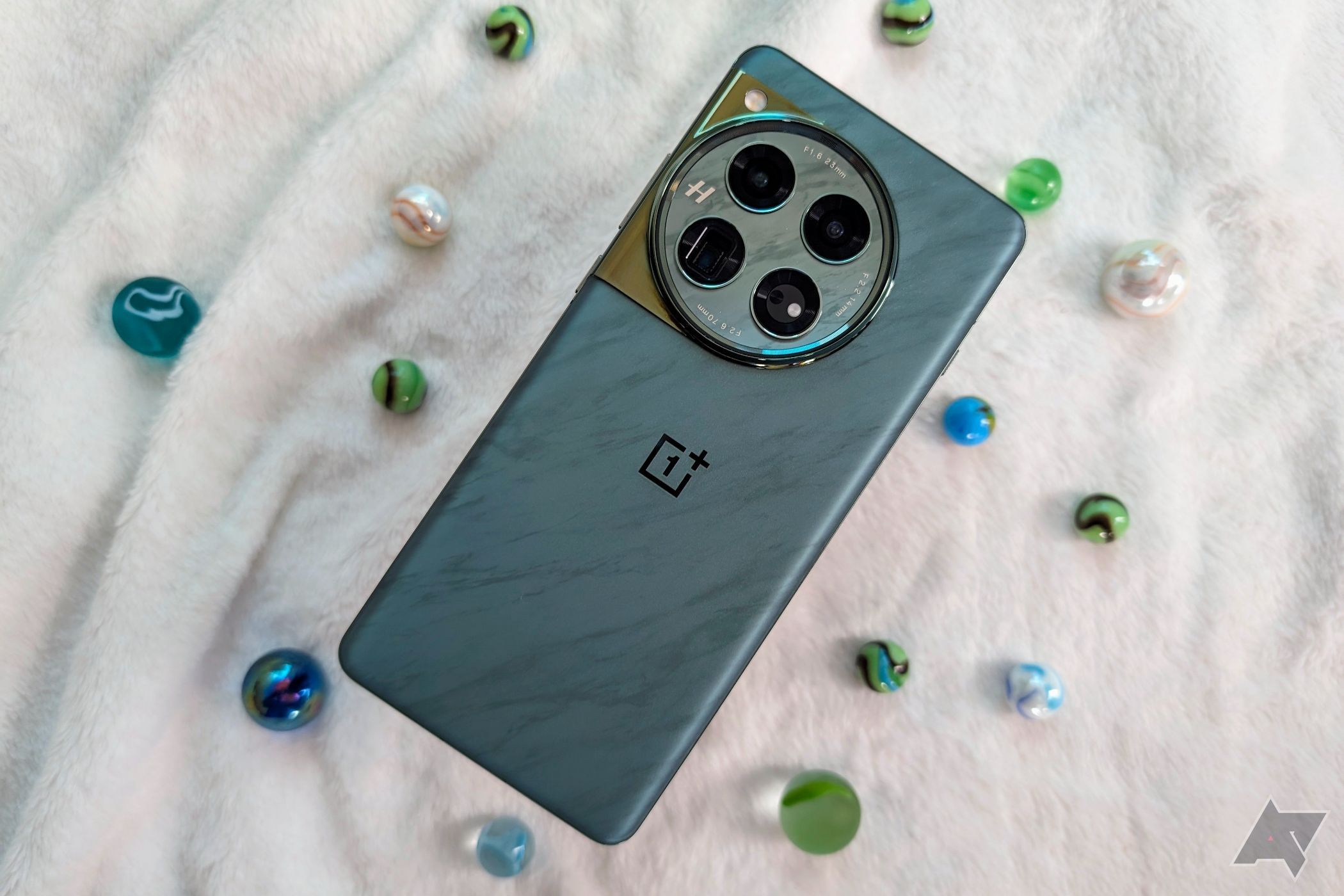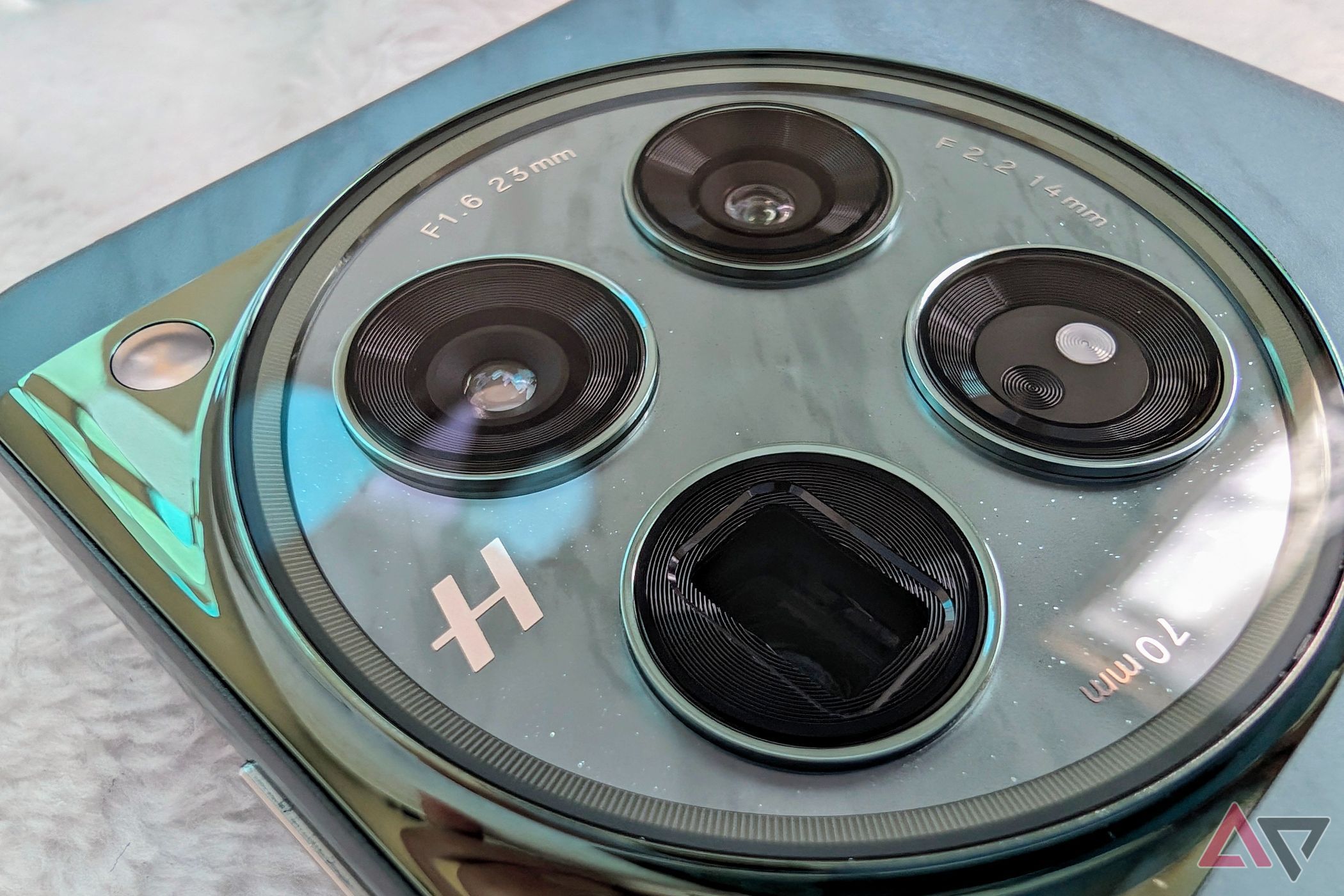-
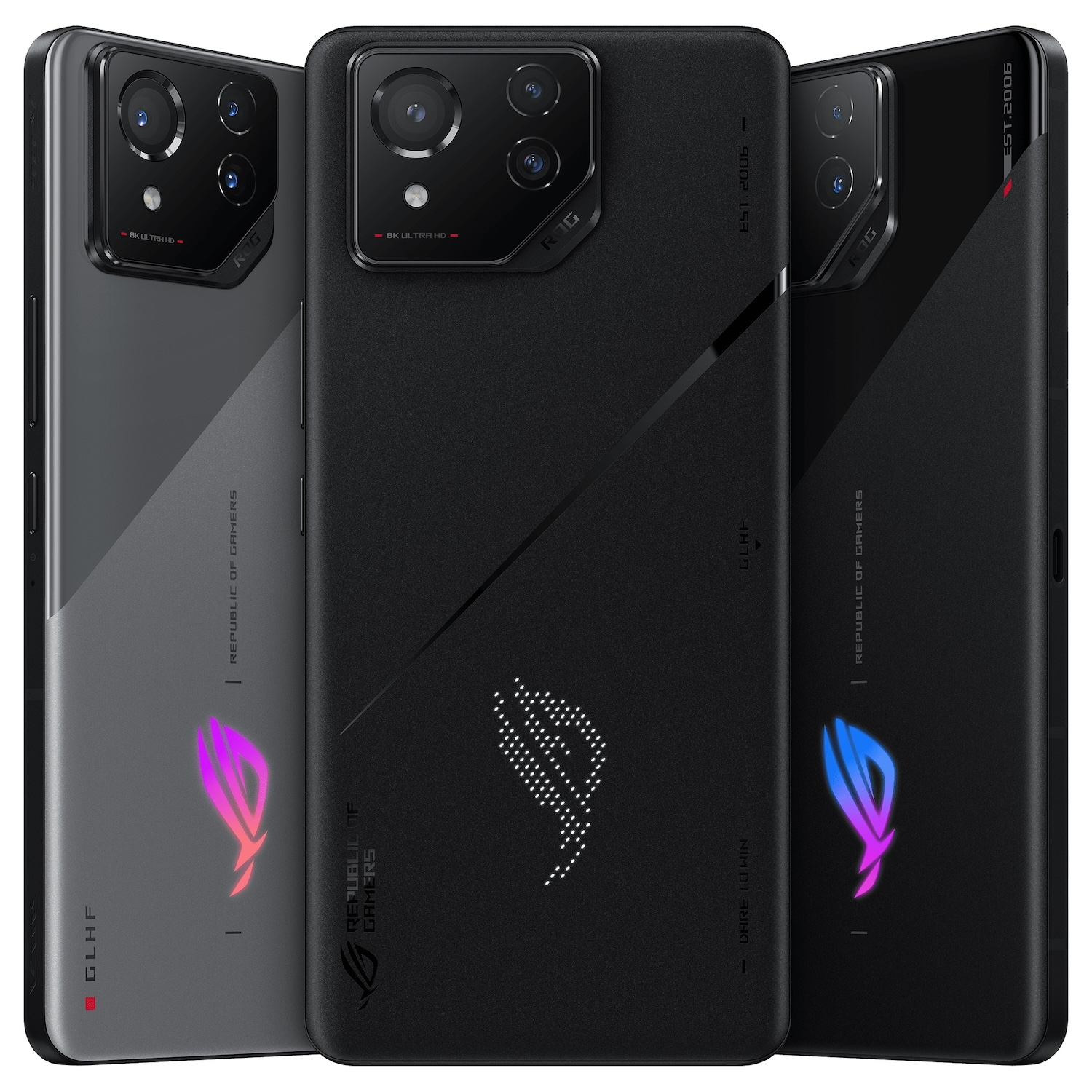
Asus ROG Phone 8
A gaming powerhouse
Asus’ ROG Phone 8 features a refined design that’s more mainstream with an edge-to-edge display and a relatively unadorned matte back. However, it also makes a few compromises to get there that may leave serious players feeling left out of the game.
Pros- Excellent performance
- Solid cameras by gaming phone standards
- Great battery life
Cons- Hole-punch camera detracts from the gaming experience
- Only one front-facing speaker
- Expensive
-
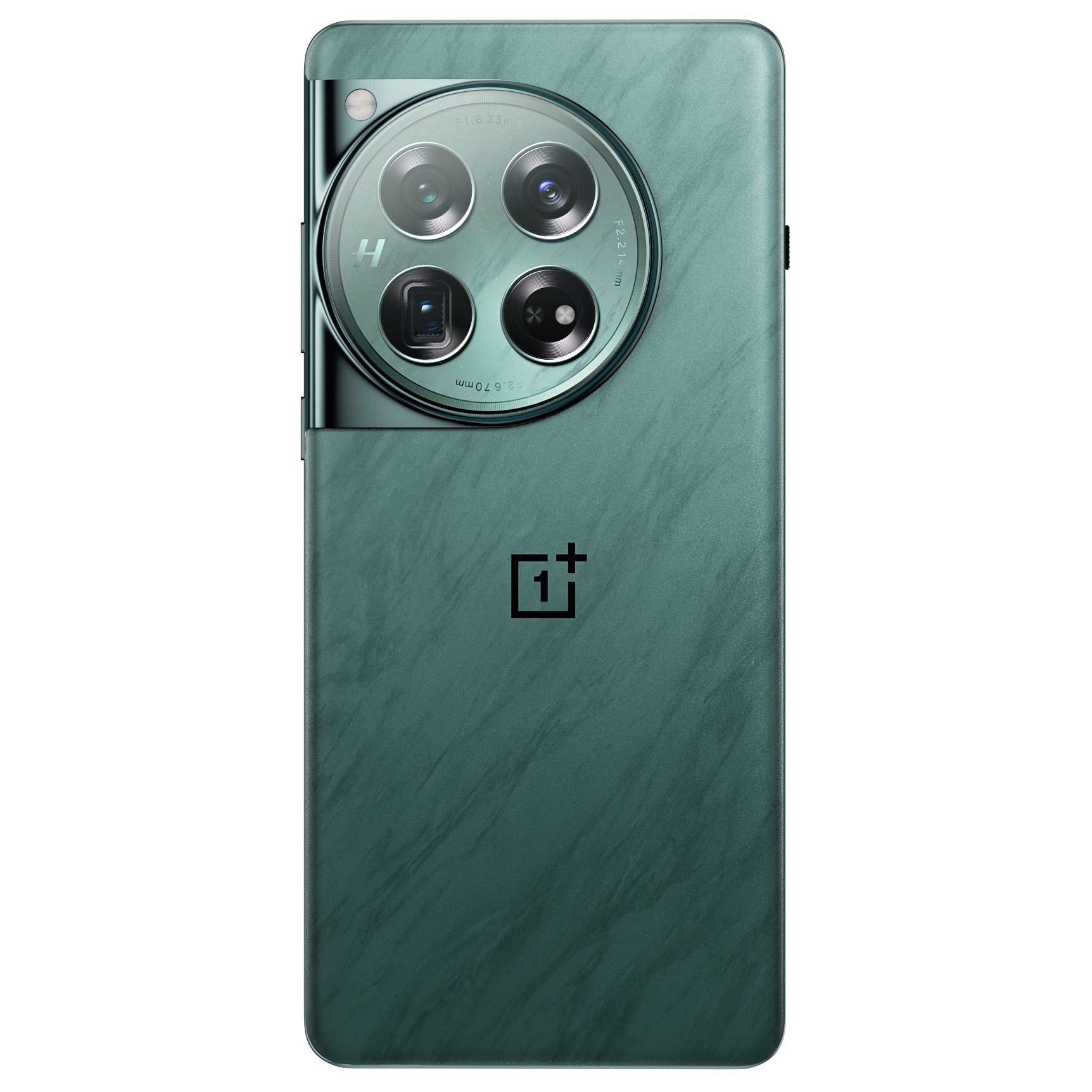
OnePlus 12
Power and class
$700 $800 Save $100
The OnePlus 12 is an elegant powerhouse that packs in Qualcomm’s latest Snapdragon 8 Gen 3 chip with a bright and vibrant display, a Hasselblad-tuned camera system that can run with the best of them, and some of the fastest wired and wireless charging speeds on the market.
Pros- Bright and vibrant display
- An impressive camera system
- Excellent battery life and very fast charging
Cons- OxygenOS isn’t for everyone
Increasingly powerful chips in modern flagship smartphones have eliminated some of the old distinctions that set the best gaming phones apart from the rest of the pack. Today, nearly every one of the best Android phones packs enough horsepower under the hood to handle anything on the Play Store and is far better suited for everyday needs.
As a result, some gaming phone makers have begun to move to the center, casting aside their previously gamer-focused designs to enter the mainstream. Such is the case with Asus’ ROG Phone 8, which could easily pass for any other modern flagship. Meanwhile, phones like the OnePlus 12 bridge the gap from the other direction by harnessing the raw power of Qualcomm’s latest chips to dabble in gaming-centric performance features.
Do these two phones actually meet somewhere in a happy middle, or has one or the other gone too far? Let’s take a look and find out.
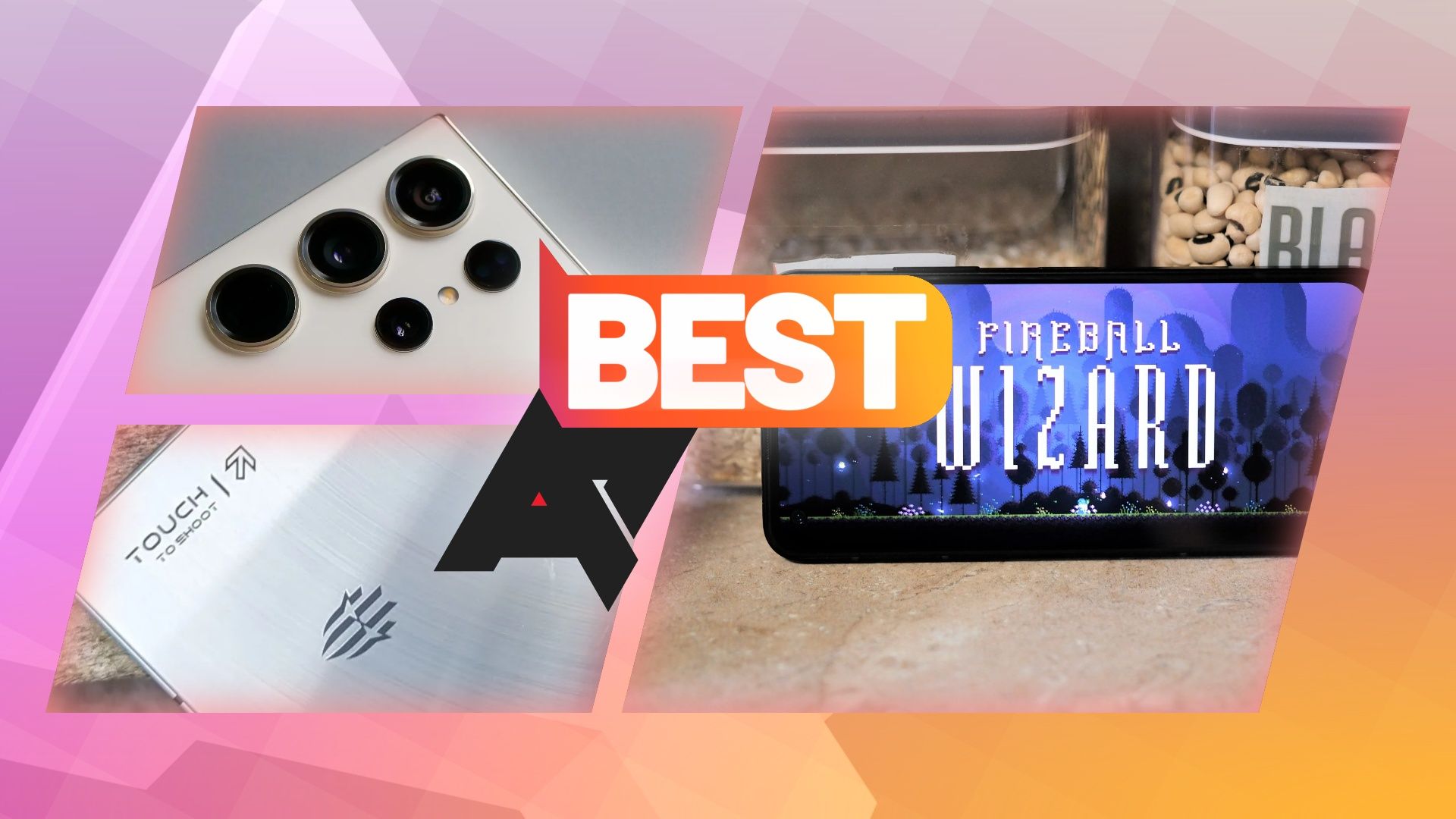
Best gaming phones in 2024
Looking to pick up a new smartphone that’s great for gaming? These are the best gaming phones on the market
Price, availability, and specs
Asus’ ROG Phone 8 comes in a single configuration with 256GB of storage and 16GB of RAM, although you can choose Phantom Black or Rebel Gray colorways. It sells for $1,099 directly from Asus, although it can often be found for less on Amazon. Asus also offers a Pro version with up to 1TB of storage and a staggering 24GB of RAM, but other than that and the LED display on the back, its specs are virtually identical to those of the ROG Phone 8.
The OnePlus 12 can be purchased directly from OnePlus’ website and other online retailers like Amazon. It starts at $800 for the base 256GB model with 12GB of RAM, which is only available in Silky Black. The 512GB/16GB configuration sells for $100 more and can also be purchased in Flowy Emerald.
One thing that the ROG Phone 8 and OnePlus 12 have in common is that you won’t find them at your local carrier store. That means no on-contract discounts, but the good news is that they’ll both work fine on AT&T and T-Mobile. Sadly, although the OnePlus 12 also works well on Verizon, the situation is trickier for the ROG Phone 8 as it doesn’t support one of the more crucial 4G/LTE bands. You’ll be okay if you stay within 5G coverage, although it’s worth mentioning that neither the Asus nor OnePlus phones support the extremely high-frequency mmWave bands used to provide higher speeds in dense urban areas.
-
Asus ROG Phone 8 OnePlus 12 SoC Qualcomm Snapdragon 8 Gen 3 Qualcomm Snapdragon 8 Gen 3 Display type LTPO AMOLED, 165Hz LTPO AMOLED, 1-120Hz Display dimensions 6.78-inch 6.82″, 19.8:9 Display resolution 1080 x 2400 3168 x 1440 RAM 16GB 12GB or 16GB Storage 256GB 256GB or 512GB Battery 5,500mAh 5,400mAh Charge speed 65W wired, 15W wireless 80W wired (100W international), 50W wireless Charge options USB-C wired, Qi wireless USB-C SuperVOOC wired, AirVOOC wireless, reverse charging Ports 2x USB-C, 3.5mm headphone jack USB-C SIM support Dual Nano-SIM Dual nano-SIM slot Operating System Android 14 Android 14 with OxygenOS 14 Front camera 32MP, f/2.5 32MP, f/2.4 Rear camera 50MP, f/1.9 main; 13MP, f/2.2 ultrawide; 32MP, f/2.4 telephoto 50MP, f/1.6, OIS main; 48MP, f/2.2 ultrawide; 64MP, f/2.6, OIS, 3x telephoto Cellular connectivity 4G LTE, sub-6 5G Sub-6 5G, LTE Wi-Fi connectivity Wi-Fi 7 Wi-Fi 7 Connectivity NFC IR blaster, NFC Bluetooth Bluetooth 5.3 Bluetooth 5.4 Dimensions 163.8 x 76.8 x 8.9mm 164.3 x 75.8 x 9.2mm Weight 225g 220g IP Rating IP68 IP65 Colors Rebel Grey, Phantom Black Flowy Emerald, Silky Black Stylus No No Price From $1,099 From $800
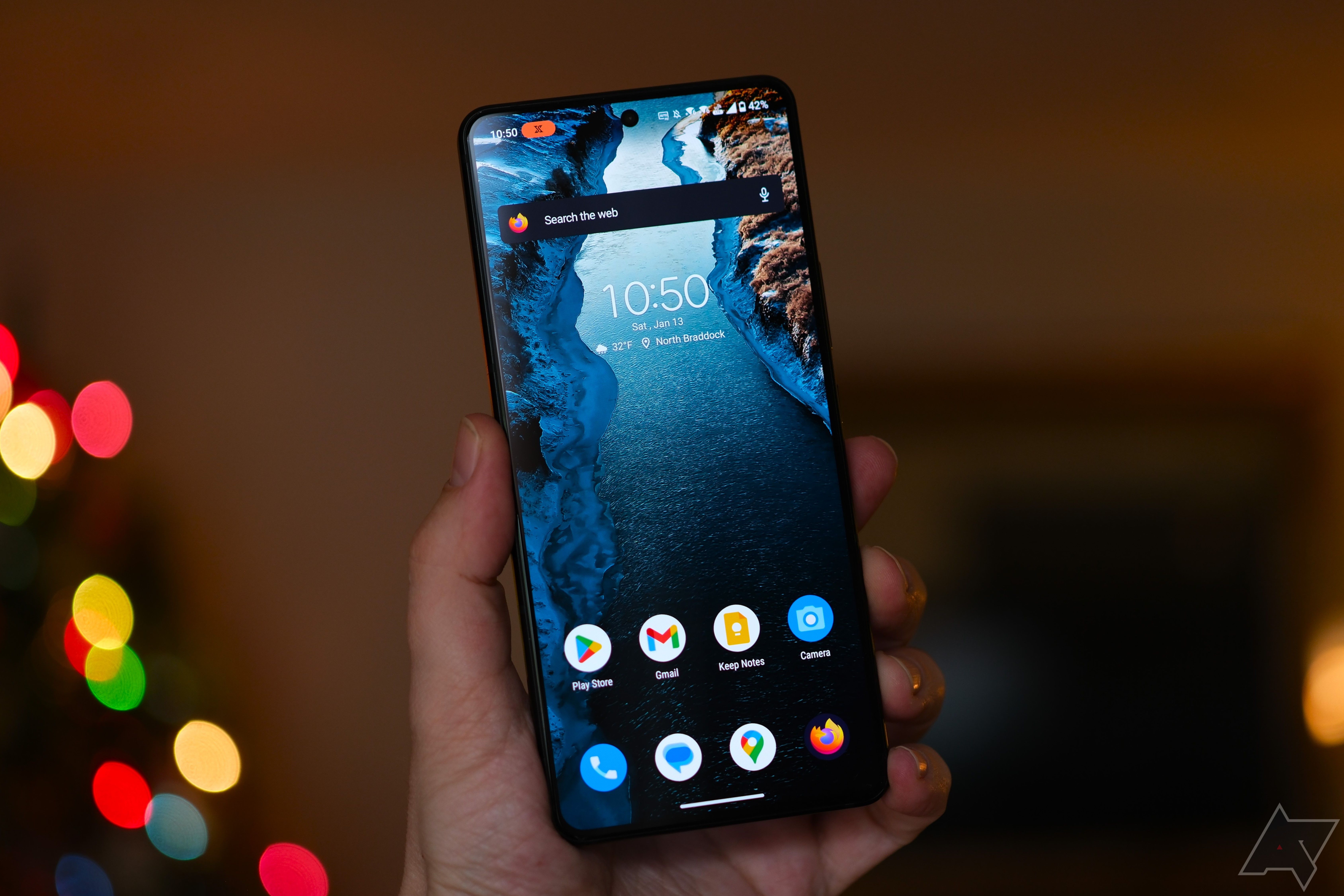
Asus ROG Phone 8 Pro review: I’m not sure this is a gaming phone
Asus has changed the ROG Phone formula, and I’m not convinced it’s for the better
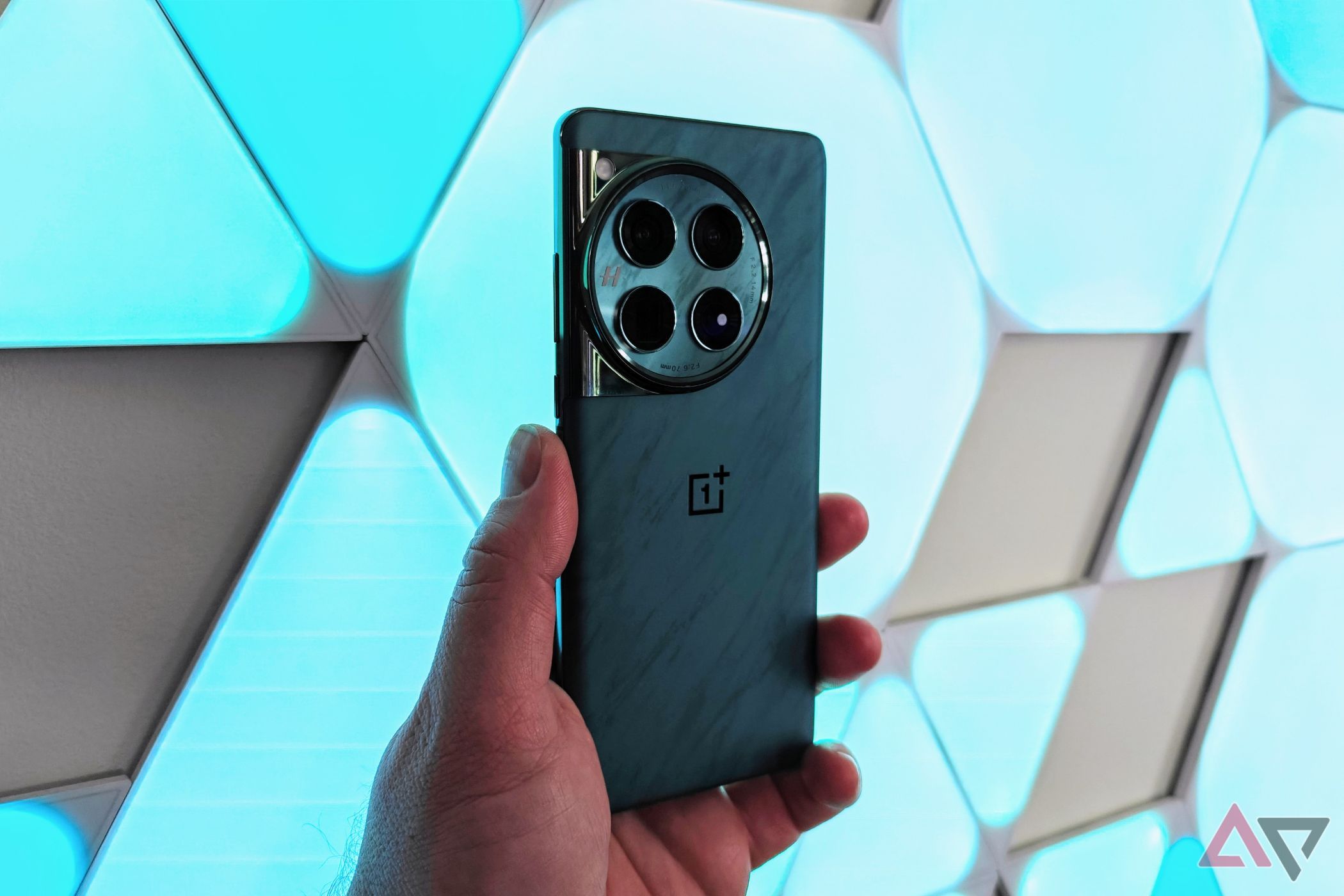
OnePlus 12 review: All flagship, no AI
This phone leaves nothing on the table, making for a truly complete package
Design
A subtle gamer and a bold flagship
Asus seems to have toned things down a bit with the ROG Phone 8, eschewing the traditional “gamer” aesthetic of previous models for a more conservative mainstream look. While it still sports a relatively blocky design, it’s considerably more muted and ordinary than anything we’ve seen from Asus in the past. It leans into flattened edges, a matte back, and an edge-to-edge display with a pinhole camera cutout.
That last point has been particularly controversial among ROG Phone fans — some of us certainly felt it — as it’s perhaps the most noticeable detraction from the immersive gamer-centric experience offered by Asus’ prior phones. That compromise was necessary to eliminate the bezels, as was eliminating the dual front-facing stereo speakers.
While the new look may alienate some of Asus’ most hardcore fans, it’s retained some of its subtler gaming features, including the Air Triggers for in-game control and a USB-C port on the long edge, so you can keep it plugged in during intense gaming sessions without a cable awkwardly jutting out the side. There’s also a ROG logo on the back, illuminated by a series of LEDs, that can be programmed to change color, but you’ll need to upgrade to the ROG Phone 8 Pro if you want a fully customizable LED matrix.
On the other hand, OnePlus proves that you don’t have to be bland to be mainstream. The OnePlus 12 follows the company’s bold and opinionated design language, taking its signature rounded camera array from the OnePlus 11 to a more refined look. A metal ring gives it the feel of a classic watch, and the Hasselblad branding is replaced with a subtler and more elegant stylized “H” logo. The OnePlus 12 also retains the same black and green motifs, offering them in Silky Black and Flowy Emerald this year.
The ROG Phone 8 and OnePlus 12 both use durable Gorilla Glass Victus 2 for the screens. However, while the OnePlus 12 only has an IP65 water resistance rating, Asus has bolstered the ROG Phone 8 to an IP68 rating by eliminating the open vents for active cooling.
Display
Fast and bright
Leaving the hole aside, the ROG Phone 8 offers an impressive gaming display, with an expansive 6.78” FHD OLED panel that can reach refresh rates of up to 165Hz. Best of all, Asus lets you control that refresh rate rather than simply deciding what’s best for you, so you can lock it in at 165Hz without worrying about the phone randomly dropping it to a lower frame rate. We found the screen crisp and vibrant, even at the maximum refresh rate. We had no issues with dropped frames, which wasn’t surprising considering the chip inside, which we’ll talk about some more in a moment.
The OnePlus 12 takes the resolution up a notch with a 3168 x 1440 WQHD AMOLED LTPO panel. The refresh rate tops out at 120Hz, but we think that’s more than acceptable for most folks. Only hardcore gamers should care about higher refresh rates, but there are diminishing returns above 120Hz, and not everybody can tell the difference on a smartphone display.
The displays on both phones are plenty bright, with the ROG Phone 8 offering 2,500 of peak brightness while the OnePlus 12 boasts a ridiculous 4,500 nits. Like refresh rates, those differences will be meaningless for most users. We had no problem seeing either phone in direct sunlight, and it’s important to remember that peak brightness isn’t the same as the sustained screen brightness; the higher peak numbers mostly give companies bragging rights on spec sheets.
However, the OnePlus does have one practical display advantage for folks sensitive to flickering on OLED screens. The panel on the OnePlus 12 features an impressively high 2,160Hz pulse width modulation (PWM) dimming. That’s an order of magnitude better than even the best rates offered by other smartphones. At 485Hz, the ROG Phone 8 is more in line with Samsung’s Galaxy S24 and Apple’s iPhone lineups, which come in at 492Hz and 480Hz, respectively.
Software
Two very different flavors of Android
The ROG Phone 8 ships with Asus’ own take on Android 14 out of the box, but the good news is that you’re not forced to live with its gamer aesthetic; you can dial things back almost all the way to stock Android if you prefer, while choosing to use the Asus parts you like and pass on those that don’t work for you. We were pleasantly surprised by the nuanced level of control here that lets you choose the best of both worlds.
Despite its more utilitarian design, the ROG Phone 8 is still a gaming phone under the hood, and Asus’ Armory Crate does a great job at letting you manage that experience; you can tweak nearly every performance and control setting for each game, from resolution, frame rate, and screen usage to what the Air Triggers do, plus capture screen recordings with sound. You can even use it to letterbox your games if the camera hole gets in the way.
The OnePlus 12 also ships with Android 14, in this case with the company’s OxygenOS layered on top. That’s about as far from pure Android as you can get, and people tend to either love it or hate it. Unlike the ROG Phone 8, you can’t get away from OxygenOS, so you’d better be sure you like it before taking the plunge. OnePlus fans will feel right at home, of course, and OxygenOS 14 doesn’t take things in any radical new directions — which may be a good thing or a bad thing, depending on how you look at it.
OnePlus promises four years of software updates for the OnePlus 12, which means it will someday get Android 18 and OxygenOS 18. That handily beats Asus’ two-year promise for the ROG Phone 8, although at least the company offers four years of security updates.
Performance
Two veritable powerhouses
The ROG Phone 8 and OnePlus 12 are powered by Qualcomm’s latest Snapdragon 8 Gen 3 silicon, so it should be no surprise that they can chew through even the most demanding games without breaking a sweat.
There’s more than enough power here for any mobile game you’ll find on the Play Store; in fact, it’s almost overkill, which leaves us hoping Android game developers will rise to the occasion and take advantage of what these chips can offer.
Thanks to their heat dissipation systems, neither phone got uncomfortably warm even under load. OnePlus’ Dual Cryo-velocity Cooling System left the device feeling relatively cool even when we were pushing it harder. Asus offers an optional AeroActive Cooler that the company says can drop the operating temperature by up to 36 degrees Celsius, which can make a difference in sustained performance during marathon gaming sessions, especially since Asus’ Armory Crate lets you run settings at maximum performance — battery life, and temperature be damned.
Since they pack in the same chip, the most significant performance difference between the ROG Phone 8 and the OnePlus 12 will come down to the RAM in whatever model you pick. The entry-level OnePlus 12 comes with 12GB, but you can opt for the 512GB model with 16GB of RAM. The ROG Phone 8 only comes in a single 256GB/16GB model; you can opt for the top-of-the-line “Pro” version if you want 24GB of RAM, but that’s largely unnecessary with anything on the Play Store today.
Battery life
Beyond a full day and fast charging
The ROG Phone 8 and OnePlus 12 are also pretty evenly matched when it comes to battery life and charging. With 5,500mAh and 5,400mAh cells, respectively, and the power efficiency of the Snapdragon 8 Gen 3 at work, you’ll have no problem getting through two days on either phone.
While serious gaming sessions will put a dent in that, one of the nice features of the ROG Phone 8 is passthrough charging, which lets you power the phone without charging the battery. That cuts down on heat and preserves battery health, so you can plug in during long gaming sessions without fretting about cooking your phone or damaging your battery.
The OnePlus 12 comes out slightly ahead in charging speeds, offering 80W wired (in the U.S.) and 50W wireless if you opt for OnePlus’ AirVOOC wireless charger. The ROG Phone 8 can charge up at a very respectable 65W wired, which is close enough for most folks, but the wireless charging operates at the standard 15W speeds.
Camera
A clear winner with a surprisingly solid runner-up
It seems that Asus has gone on a mission to prove that gaming phones don’t need to compromise on cameras — and it’s largely succeeded. The ROG Phone 8 gains some of the nice camera improvements that came to the Zenfone 10 last year. It has a 50MP main sensor that features image stabilization for photos and videos, plus a 13MP ultrawide and 32MP 3X telephoto lens.
Asus has also made some software improvements, likely harnessing the AI and image signal processing power in Qualcomm’s latest chip to produce better results. They still don’t compare to what you’ll get from one of the best camera phones, but they’re surprisingly good by gaming phone standards.
However, the OnePlus 12 is one of those best camera phones, so it naturally comes out ahead in its photographic prowess. It continues the company’s partnership with Hasselblad, which helps tune the cameras for the best color, plus bokeh and flare effects designed to match portraits taken from Hasselblad XCD 30mm and 65mm camera lenses. This results in great-looking photos that are balanced, natural, and vibrant without playing with the settings. The 50MP primary and 48MP ultrawide lenses are joined by a 64MP periscope lens that offers a 3x optical zoom, a 6x in-sensor zoom, and a 120x hybrid zoom.
Which one is right for you?
At one time, the choice between an Asus ROG Phone and nearly any mainstream phone was an obvious one, but the ROG Phone 8 has blurred the lines a bit more.
Nevertheless, despite Asus’ more democratic approach to its latest phones, we think the OnePlus 12 is the far better choice for most users. It has a more established design and history, and it’s a phone that clearly knows what it wants to be and does a very good job at it. It delivers the same raw performance, plus a much better camera system, faster wireless charging, twice the timeframe for Android updates, and a higher storage capacity option, all for less than the base price of the ROG Phone 8.

OnePlus 12
Best overall
Excellent gaming performance
$700 $800 Save $100
The OnePlus 12 hits all the right notes by delivering top-notch performance, a highly competent camera system, a bold, bright, and vibrant screen, and extremely fast charging, all for well under $1,000.
That’s not to say that the ROG Phone 8 isn’t a solid choice, but for $1,000, you really have to be sure about what you’re getting into. Unlike Asus’ past models, this is a gaming phone with a bit of an identity crisis. There are enough gaming features to make it worth considering, but there are also drawbacks that will make serious gamers think twice. If you fit into whatever Asus’ target audience is for the ROG Phone 8, you’ll probably love it, but there are also many other gaming phones to choose from.

Asus ROG Phone 8
Runner-up
Good gaming option at a cost
Asus’ ROG Phone 8 is a high-performance gaming phone that’s not quite sure of itself. The more mainstream design is thinner, but moves to an edge-to-edge screen that adds a distracting camera hole and other compromises that detract from the overall gaming experience.
Source link

